29 Writing Portfolio Examples & Practical Tips to Create Yours
You can read thousands of guides on creating a writing portfolio –and you might still end up staring at your screen, not knowing where to start. Because sometimes what we need even more is to see real-life examples and get some inspiration. And that’s exactly what we’re going to show you today.
We collected 29 writing portfolio examples: real websites of real writers, to give you some idea about what usually goes into them and what they tend to look like. But keep on reading, because we’ve also added some brief and practical tips for creating your writing portfolio.
29 real-life writing portfolio examples
- Shanice Perriatt

Shanice's writing portfolio was created with Copyfolio, using the Letterpress template
2. Christian Boutwell
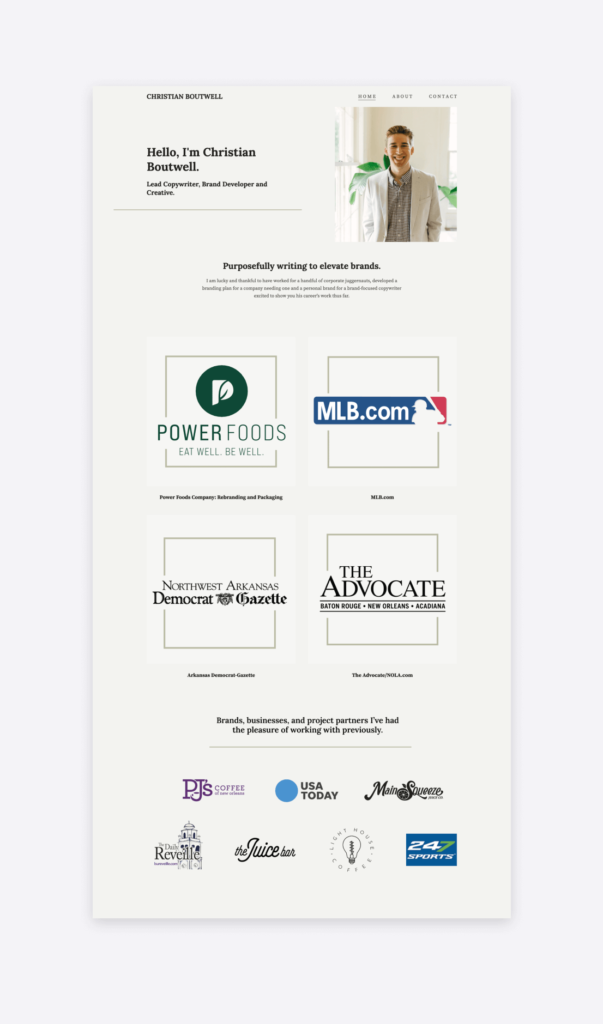
Christian made his portfolio with Copyfolio, using the Journal template
3. Rebecca Georgia
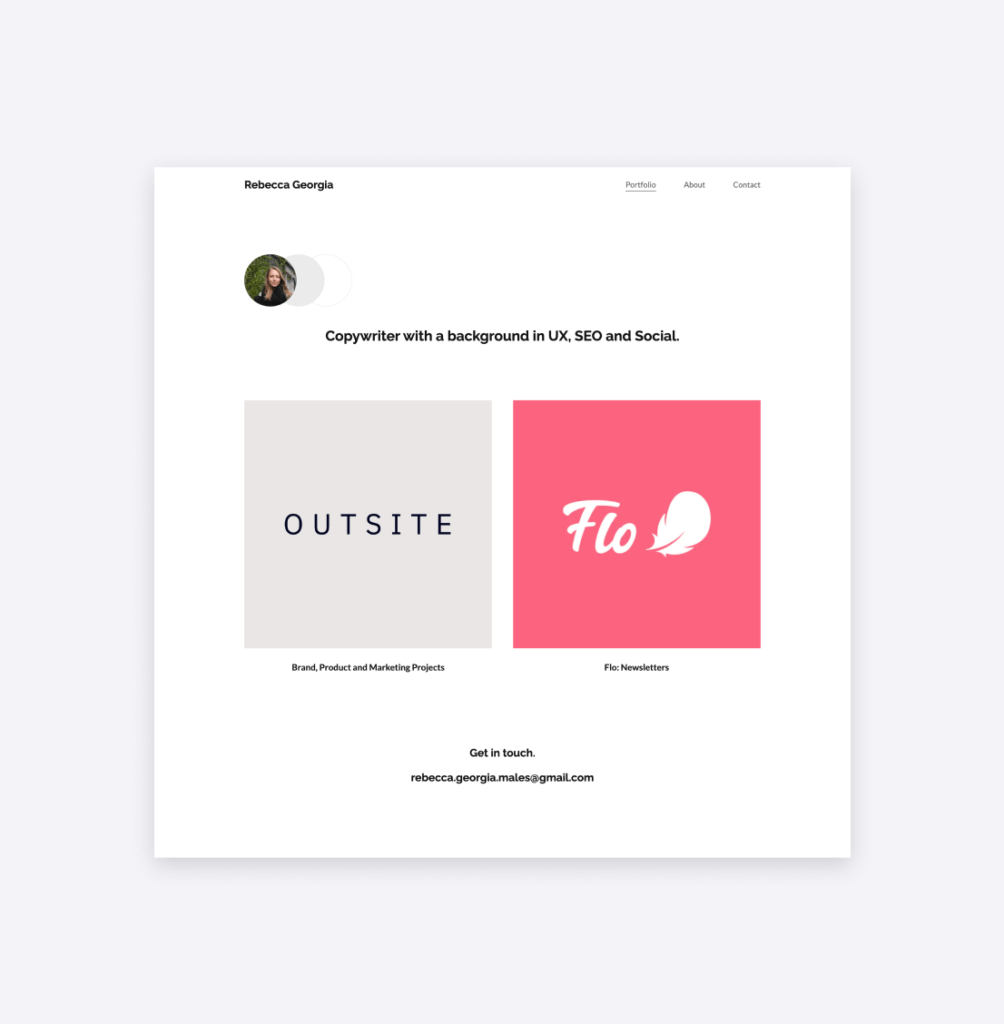
Rebecca built her portfolio with Copyfolio, using the Typewriter template
4. Emma Buckley

Emma's portfolio uses the Letterpress template of Copyfolio
5. Lara Ramirez
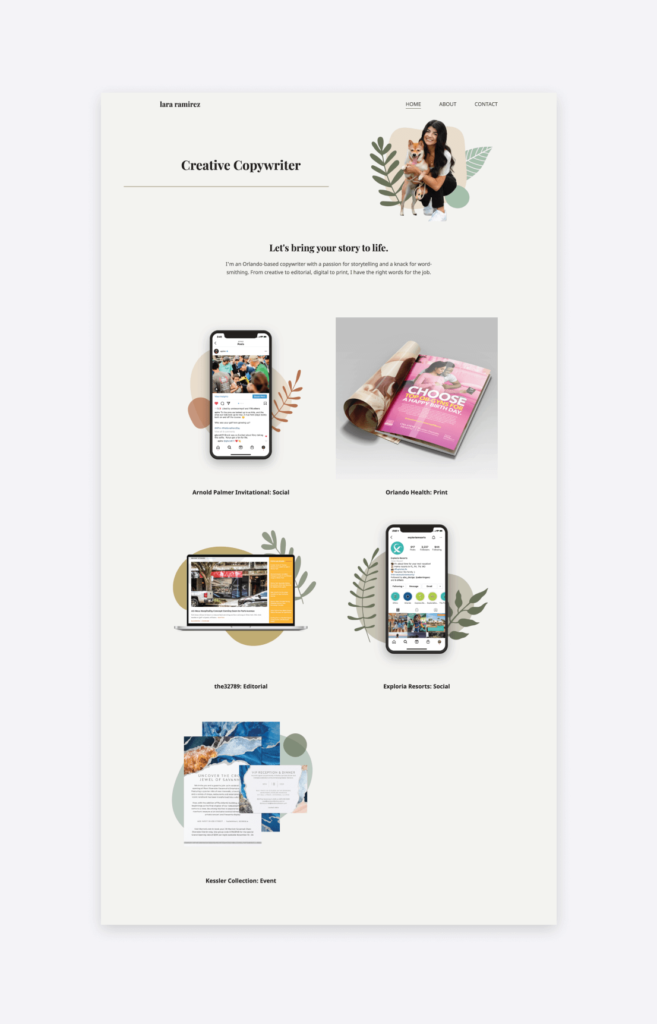
Lara created her writing portfolio with Copyfolio, using the Journal template
6. Halle Snavely
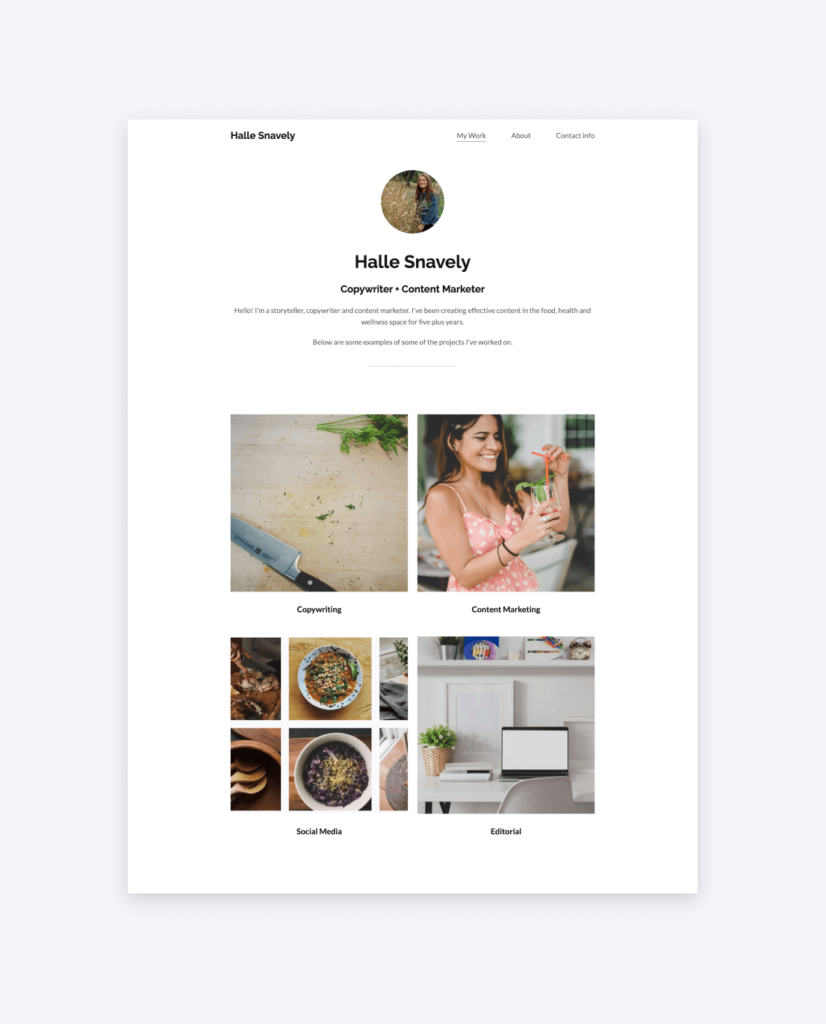
Halle used Copyfolio with the Letterpress template and Ink color palette to create her writing portfolio.
7. Felicia Ang

Felicia created her portfolio using Copyfolio, and the "Journal" template
8. Carly Zumar
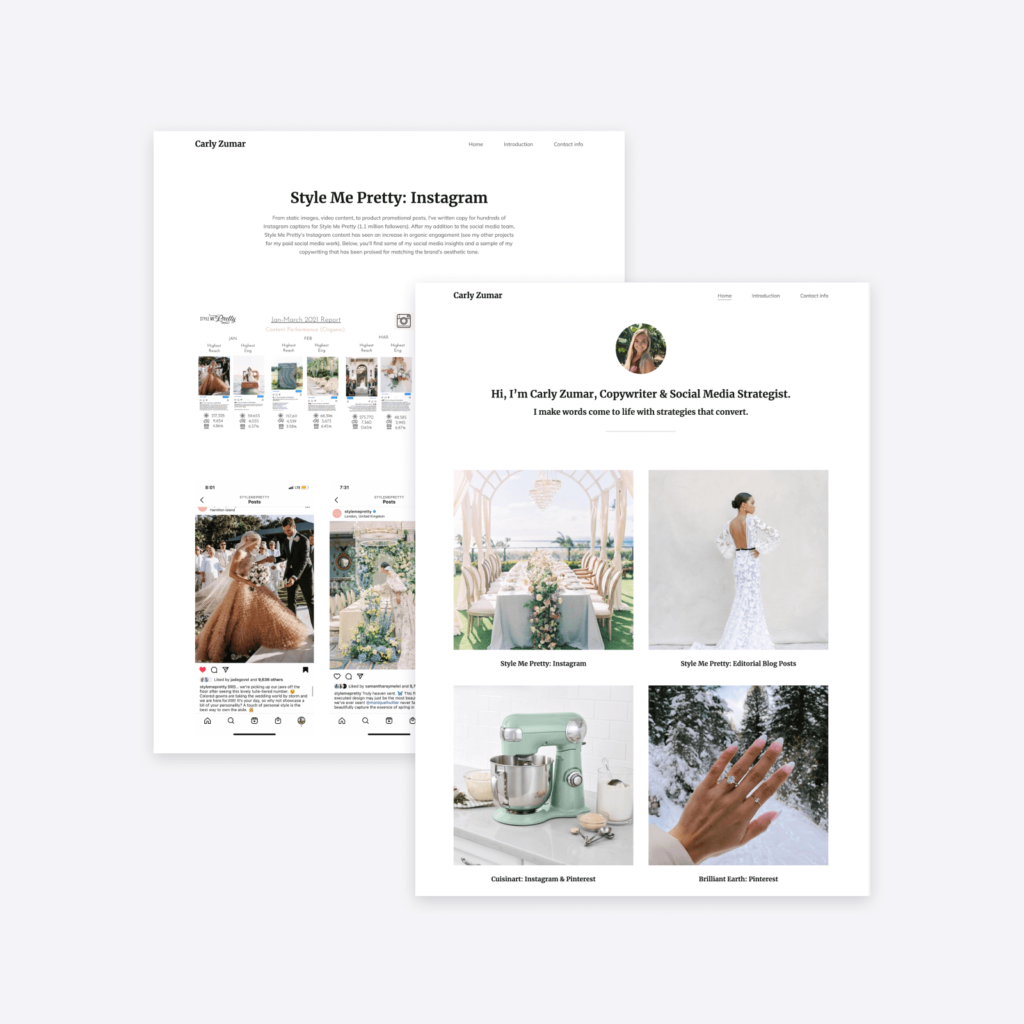
Carly created her writing portfolio with Copyfolio, using the "Letterpress" template
9. Erica Sykora

Erica's copywriting portfolio was created with Copyfolio, using the Typewriter template
10. James Tweddle

James created his portfolio with Copyfolio, using the Billboard template
11. Kat Boogard
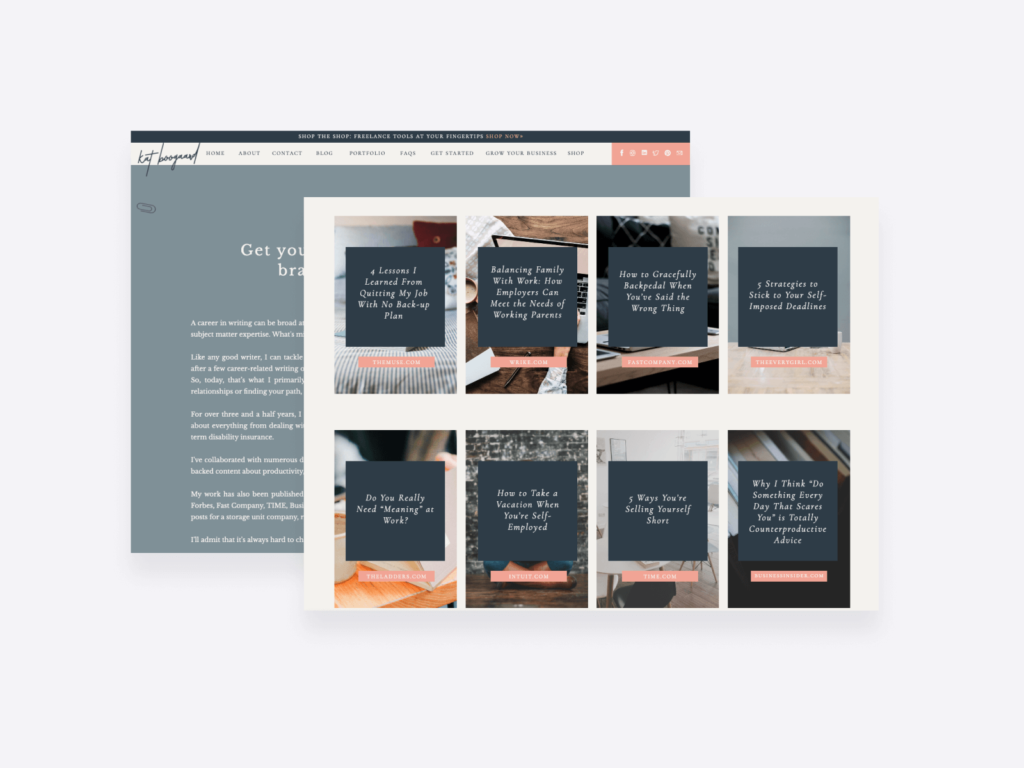
Kat's writing portfolio features thumbnails with a coral, navy, and white color palette.
12. The Literary Co.

The portfolio of The Literary Co. features thumbnails with laptop mockups.
13. Fika Bahroeny

Fika's writing portfolio website was created with Copyfolio
14. Robin Catalano
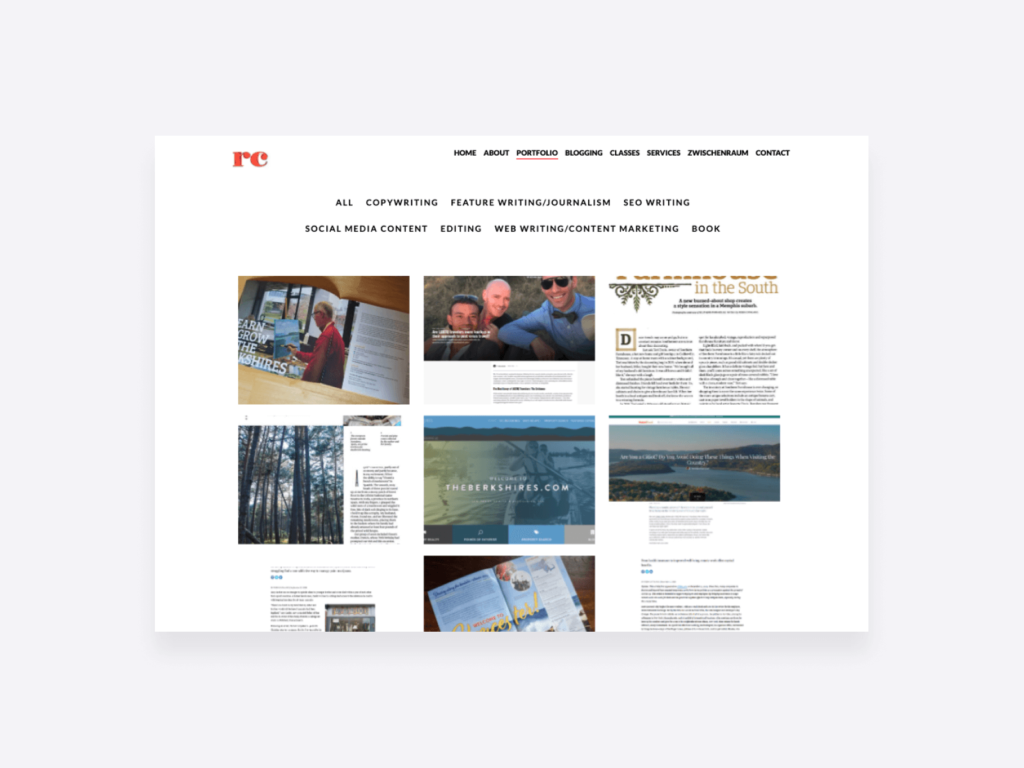
Robin organized their projects into categories on a separate portfolio page.
15. Eve L. Ewing
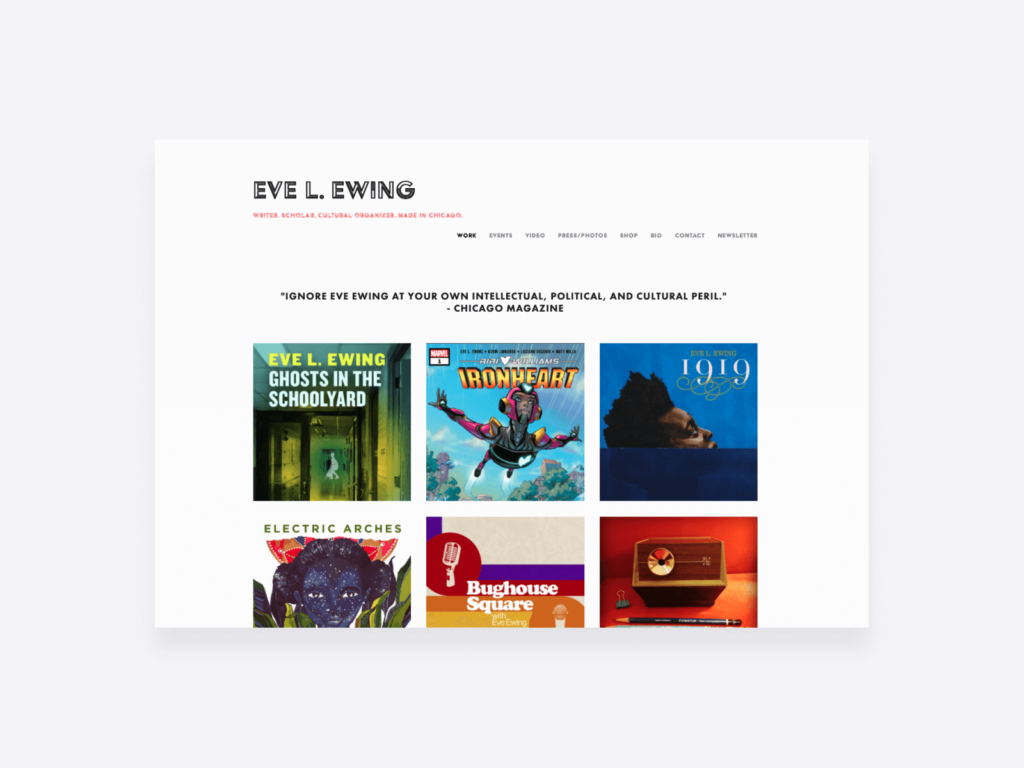
Eve L. Ewing's writing portfolio features vibrant thumbnails in a 3-column grid.
16. Ann Friedman
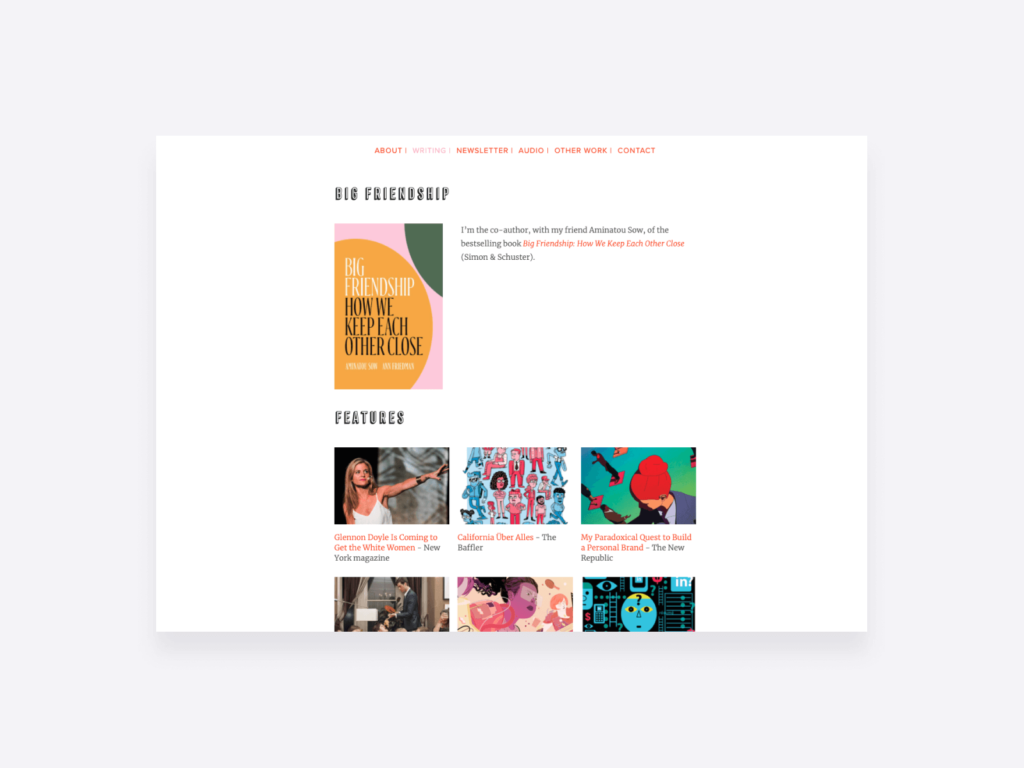
You can find the top pieces of her work on Ann's "Writing" page
17. Alejandro Castro
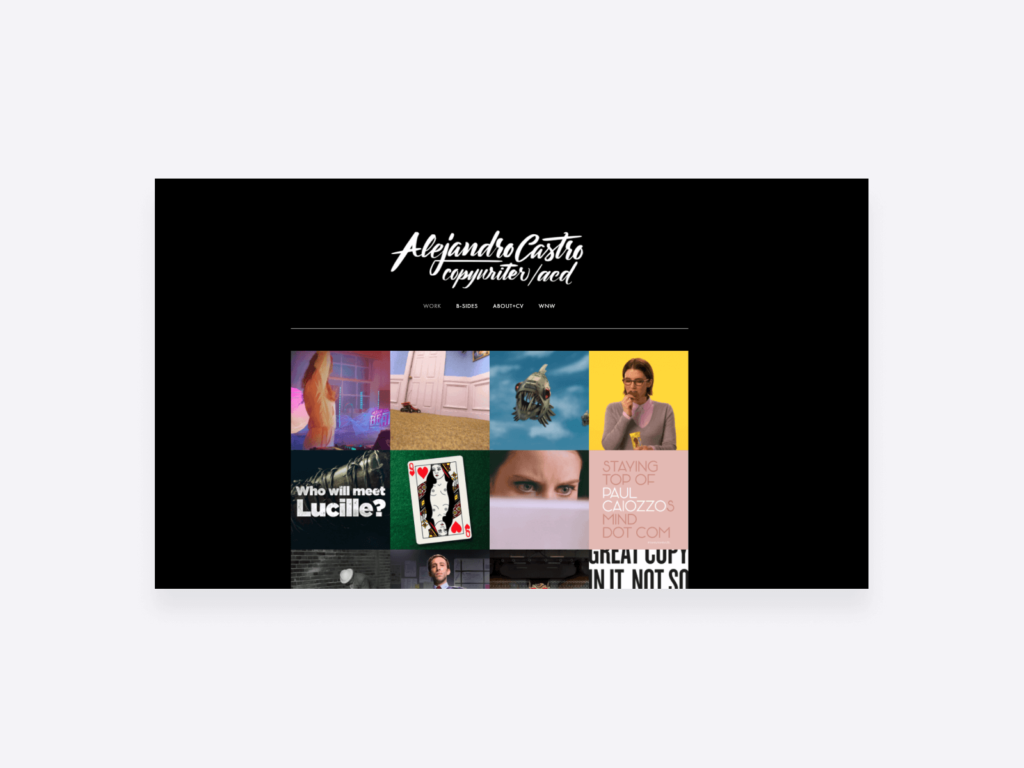
Alejandro's site is a great example for a writing portfolio with a dark background.
18. Brent Barnhart

Brent's B2B content writing portfolio starts out with a logo wall featuring top clients.
19. Malek Murison

Malek uses text styling to draw attention to the most important details in their portfolio.
20. Kristi Hines

Kristi features testimonials in her writing portfolio, to add to her credibility.
21. Jesca Austin
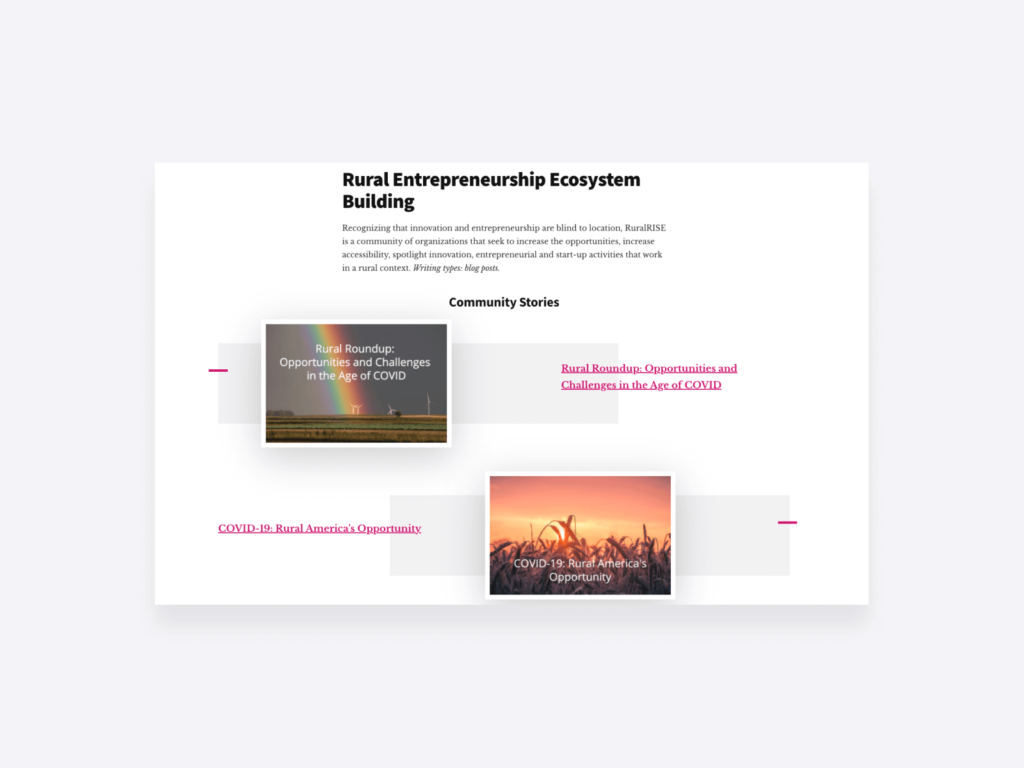
Jesca added brief summaries for project categories in her portfolio.
22. Tyler Womack

On his portfolio page, Tyler features his writing projects in a simple four-column grid.
23. Libby Hakim
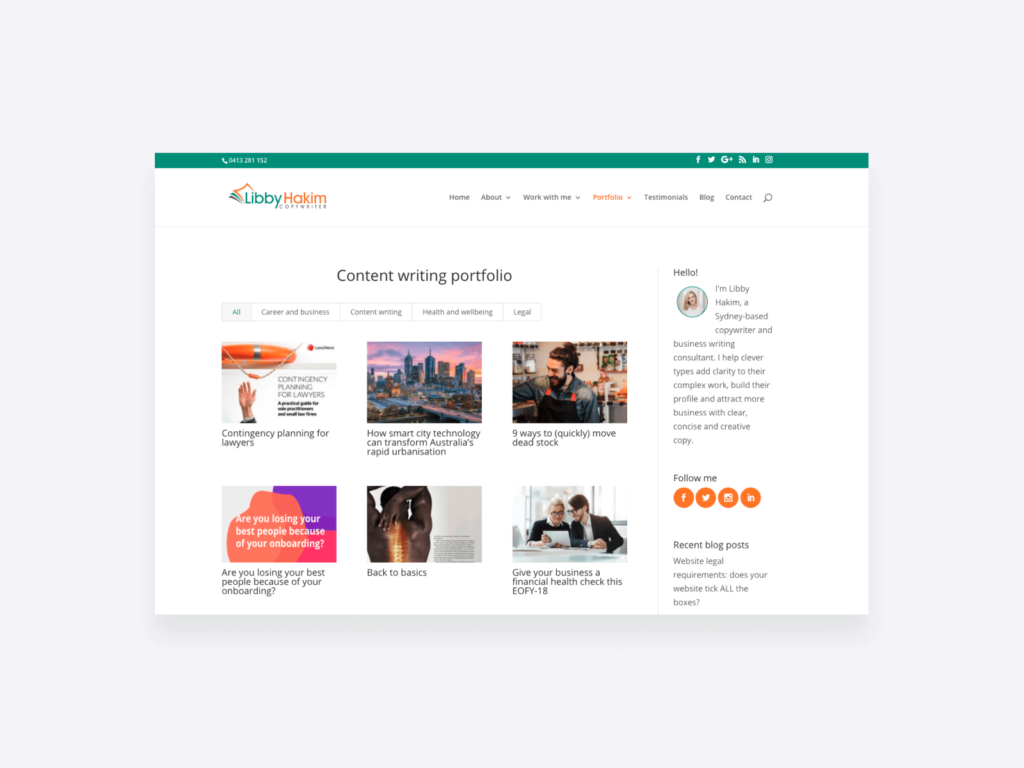
Libby Hakim's content writing portfolio feels almost like a blog, with a sidebar to the right.
24. Tomi Adeyemi
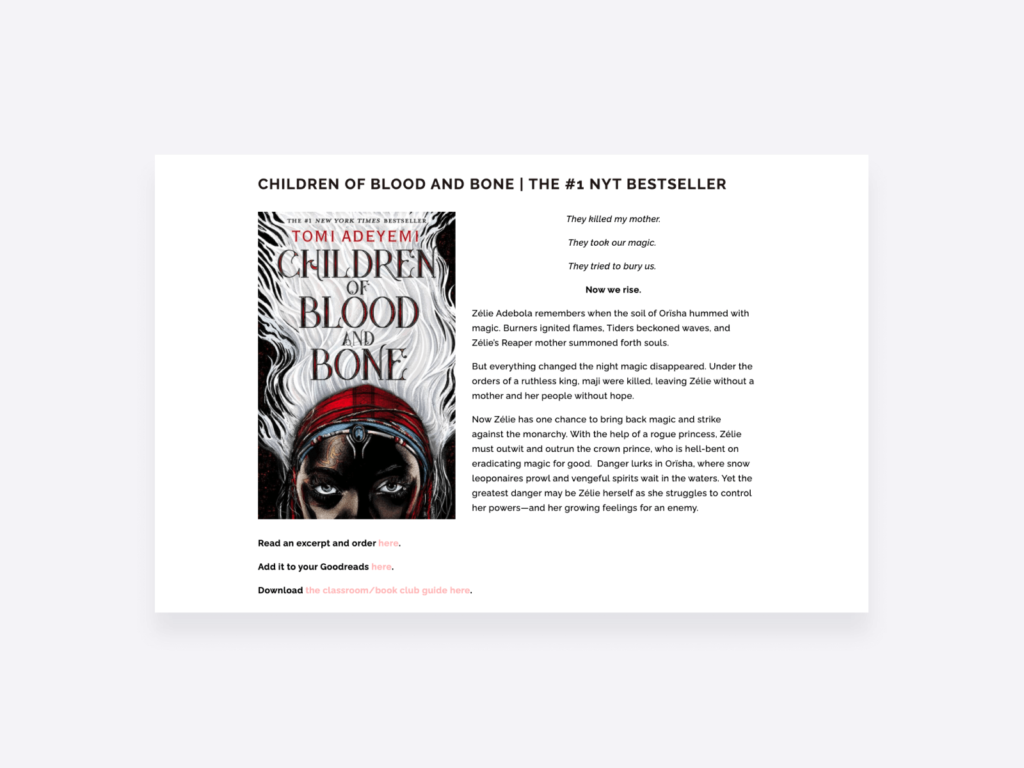
A great example of featuring books in an author portfolio website, by bestselling author Tomi Adeyemi.
25. Micky Treutlein
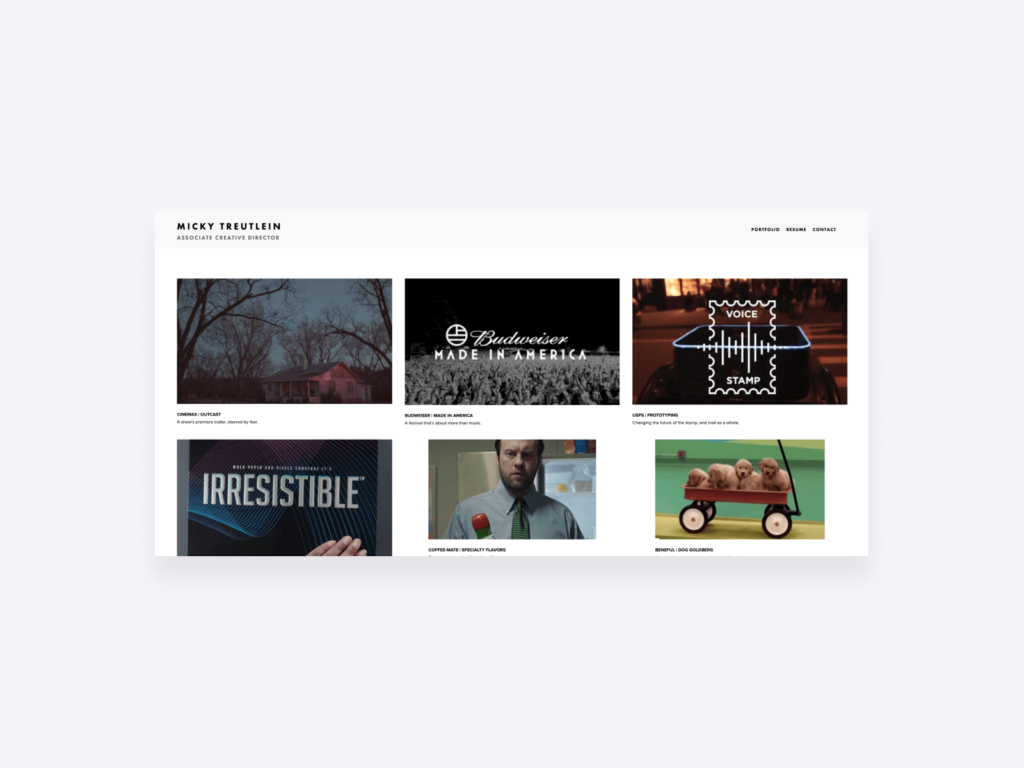
Associate creative director and copywriter Micky Treutlein features projects in a 3-column grid.
26. Daniel Forte
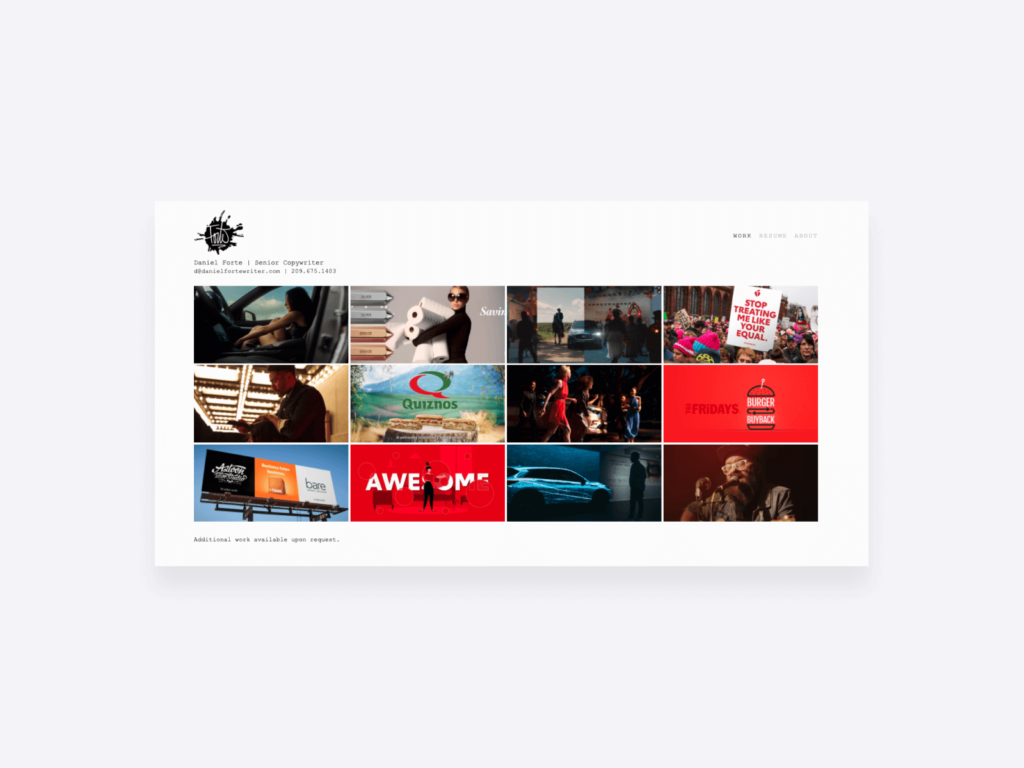
With a crisp white background, the colorful thumbnails really pop in Daniel's portfolio.
27. Jim Vallet

Jim added his project thumbnails as a masonry grid with no white space in-between.
28. Simon Steinhardt
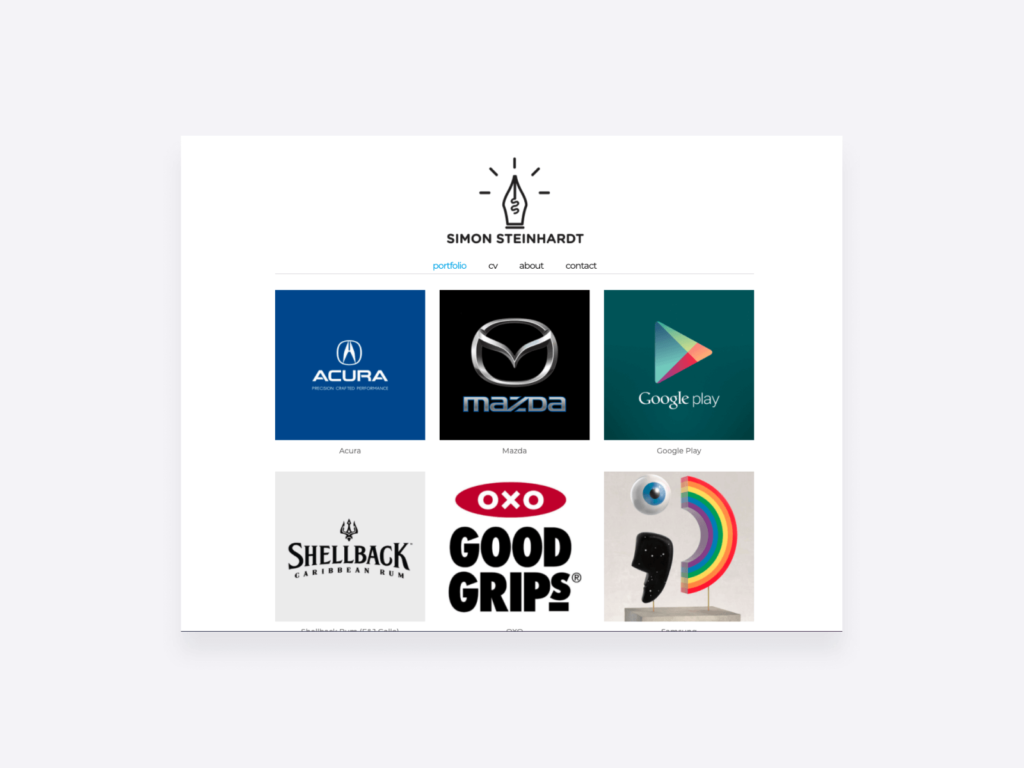
The simple but aesthetic writing portfolio of Simon Steinhardt
29. Leah Chamberg
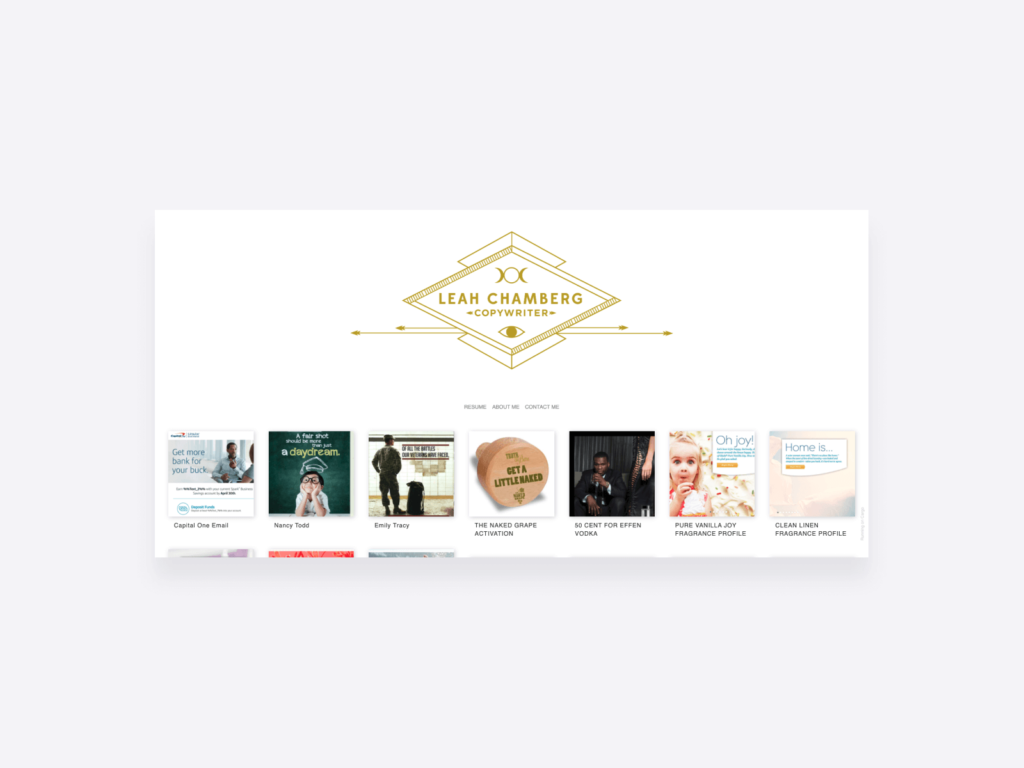
Copywriter Leah Chamberg added her projects under a prominent logo for personal branding.
If you’d like to see more specific examples, check out our collection of copywriting portfolio examples –or our article about creative writing portfolios.
Here’s what you can learn from these writing portfolio examples
What is a writing portfolio and why do you need one?
Let’s start with the basics. A writing portfolio is essentially a website that houses your best pieces of writing. Those writing samples live on your site along with the most important information about you and your work that a potential client or employer needs to know. Based on that, they should be able to decide if they want to hire you as a writer or not.
How to get writing samples for your portfolio?
Having a website to host all of your work is one part of having a portfolio. But collecting the writing samples themselves is just as important. If you have years of writing experience, where you get them from is given. But what if you’re just starting out and need some credible pieces to add in there? Let’s see a few options you have:
- Spec ads or made-up projects. The term ‘spec ads’ will be most commonly known among copywriters –they refer to advertisements that a designer and a copywriter create just for practice. The same goes for other writers too: just make up a project and follow through with it. Even though it’s not real client work, these projects work wonderfully in portfolios, as they still clearly show your skills and writing style. You’ll find lots of these when browsing writing portfolio examples.
- Work for friends or family. The next step between making up projects and getting real client work is offering your writing services to those around you. If there’s anyone with a business that you could write for, ask them! Just make sure to tell them that you’d like to include it in your portfolio and do your best while completing the assignment.
- Guest posting. Another popular way, mostly for content writers, is guest posting. That means writing an article and applying to post it on someone else’s blog. There are different ways to approach it, but the end result is the same: a blog post with your name on it, on an (ideally) credible site, linking back to you. If you can get your name on a few well-known sites, it will look amazing in your portfolio, that’s for sure.
- Publishing on Medium. Guest posting takes a lot of pitching and sending lots of outreach emails. If you don’t want to do that, you can go ahead and start publishing your content on Medium instead. Without having to create your own blog, you can add your pieces and link to them from your portfolio website.
- Posting on your own accounts. Creating content and writing copy for social media is a popular area for writers –and what better way to show off your skills in it than using your own accounts? Nobody will restrict you or tell you what to do and you can also rest assured that it will stay online, just as you originally posted it.
7 tips for creating a website based on these writing portfolio examples
We’ve now gone through what a writing portfolio is, why you need one, and how to get writing samples to fill it up. We even checked a bunch of writing portfolio examples to get a little boost of inspiration. What’s next?
Getting to work and actually creating your writing portfolio website. Keep on reading for our best tips to make that process a hundred times easier and more productive for you.
Create an organized website for easier browsing
Clients and hiring managers don’t have all the time in the world: expect them to spend a maximum of 10 minutes going through your portfolio. And that’s why it’s incredibly important to have an organized website that they can navigate easily.
With the very first look, they should already know who you are and what you do. And they should also be able to navigate to your projects in under a minute. Once they’re done with checking your work, they have to be able to find your contact information easily.
Having a good experience on your website will also help you make a good (digital) first impression with them.
Limit the number of your projects to save time for the viewer
Following the same line of thought, limiting the number of projects you showcase will also help your viewers to actually finish reading through everything. We recommend adding around 4-6 projects, as you could see that in the writing portfolio examples above too.
With that many featured projects, you can showcase a good variety of samples, without overwhelming your visitors. Just remember, your motto for your writing projects in your portfolio should be quality over quantity.
Use eye-catching thumbnails for better conversion rates
Getting someone on your site and guiding them to your case studies is the first step. Making them actually click through is the next. How can you do that? With eye-catching thumbnails.
Humans are naturally drawn to images (and especially faces), so choosing ones that stand out can help to drastically improve the click-through rates on your site. Just make sure that the image you choose:
- visually fits in nicely with the site and the other images around it,
- will be visible even on smaller devices like tablets and smartphones,
- and that it actually has something to do with the project it represents.
Write case studies to show exactly what people want to know
Okay, let’s see the list so far: they are on your website. ✓ They know who you are and what you do. ✓ They found your projects and clicked on them to see more. ✓
Now is the time to convince them of your professionalism by taking them through your best projects. Here’s what you’ll have to include about each of them.
- A brief summary. Write a sentence or two to summarize the project. If someone only has time to read that, they should still find out the type, topic, and scale of the project.
- The project background. Write a little bit about the client you worked with and the task you were given. It will help the readers better understand and assess the final piece.
- The creative process. Sometimes seeing how you think and solve problems is even more important than the actual results. So talk a little bit about your creative process while working on the project before showing what you came up with in the end.
- The final results. This goes without saying, but in a portfolio, the actual writing pieces should also be featured in one way or another. We caution against just simply linking to it, as it can change or go unpublished. Including at least a screenshot (if not more), as you could see in our writing portfolio examples, about the project is always a good idea.
Add social proof to build trust with your audience
Anybody can say anything on the internet these days, so it’s no surprise that people are cautious about believing everything they read. One way to make your readers feel at ease about trusting you with their projects is by including social proof on your website, or in your case studies.
Whenever you finish working with a client, always ask them for testimonials. You can then feature them on your page, showing visitors that the people who have tried your services were more than happy with your work.
If you can, include a photo of them and a link to their business or profile, to add even more credibility to their testimonials.
Include your contact info to make it easy to get in touch
Once your visitor is convinced that you’re the one they want to work with, there’s one last thing left for them to do. They need to get in touch with you.
So do make sure they don’t drop off at this point, you need to make it super easy for them. The best way to do that is to have a “contact” item in your menu or navigation bar. That way your contact information is just one click away, no matter where they are on your website.
On the contact page, you can include your email address, phone number, and if you have a physical location they can visit, your address too.
As a bonus, you can write a few lines about what they can expect when they write to you. How much time does it usually take for you to reply? How is your process for getting started with new clients? Anything else they should know before reaching out? Write it all down to make them feel even more comfortable and confident about getting in touch.
Use a website builder for writers to create your portfolio quickly and easily
Our last and probably most useful tip is for actually getting started and creating your writing portfolio website.
In most cases, building a website either requires design and coding skills –or lots of time, waiting for the popular visual builders to finally load. Not to mention the time it takes to master using them, as they can be much more complex than they seem at first.
Instead of wasting time or getting frustrated, choose a website builder that was designed for writers, just like you. One that loads super fast and makes the website building process quick and easy for you. One that eliminates minor design decisions to make sure whatever you upload, your website is going to be stunning.
Try Copyfolio and create your own writing portfolio website today. You just have to follow a few simple steps:
- Sign in –it only takes two minutes. You can sign in with Google or Facebook, or ask for a link via email that will sign you right in. No password needed.
- Tell us your name and profession. This will be the title of your site at the beginning, and that’s all the info we’re asking for. No more filling out pages upon pages of unnecessary personal information.
- Choose a template. This will essentially decide the style of your website, as it comes with a color palette and font presets. But don’t worry, you can change it later anytime, without losing anything you’ve added already.
- Add copy to your pages. You’ll start out with the 3 most important pages: home, about, and contact. Go through them and type in all the information you need to display.
- Add your projects and write the case studies. As we discussed above, you should describe your projects as mini case studies. Follow our tips and write about your top projects, adding images to illustrate as you go.
And there you have it! You’ve just created a complete, professional website in the span of just a few hours. Send us a link when you are done, your site could be the newest addition to our writing portfolio examples!





